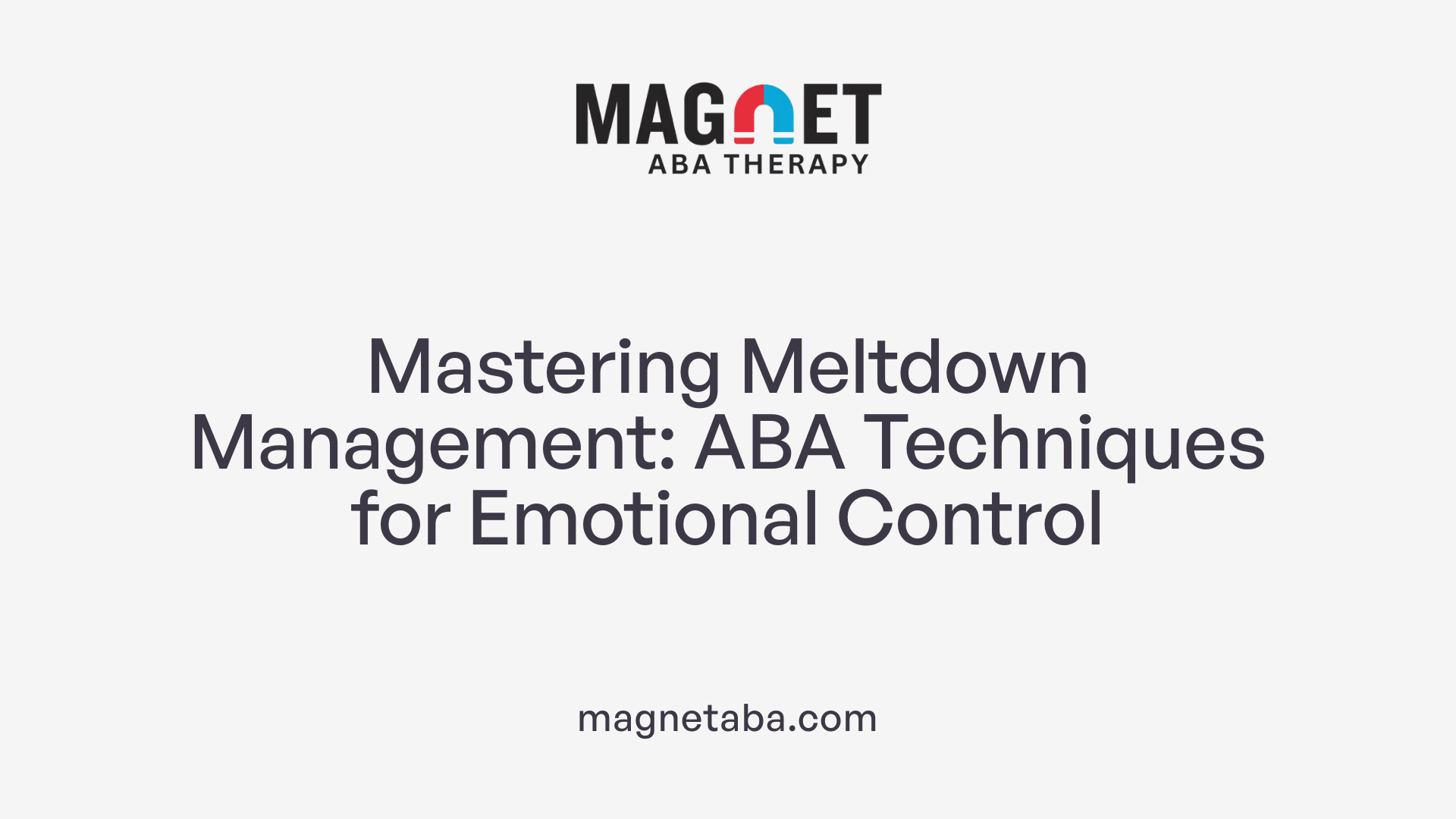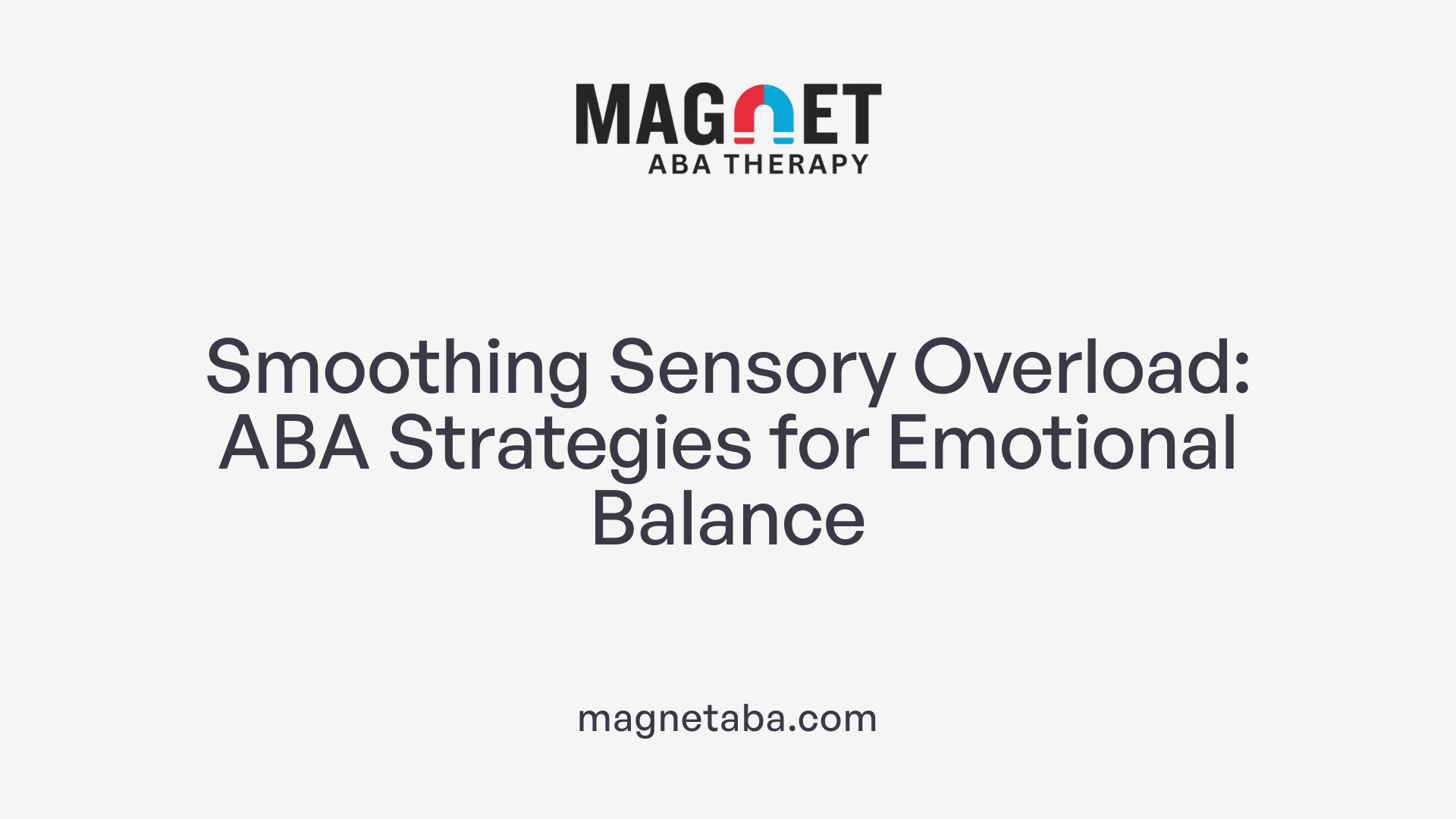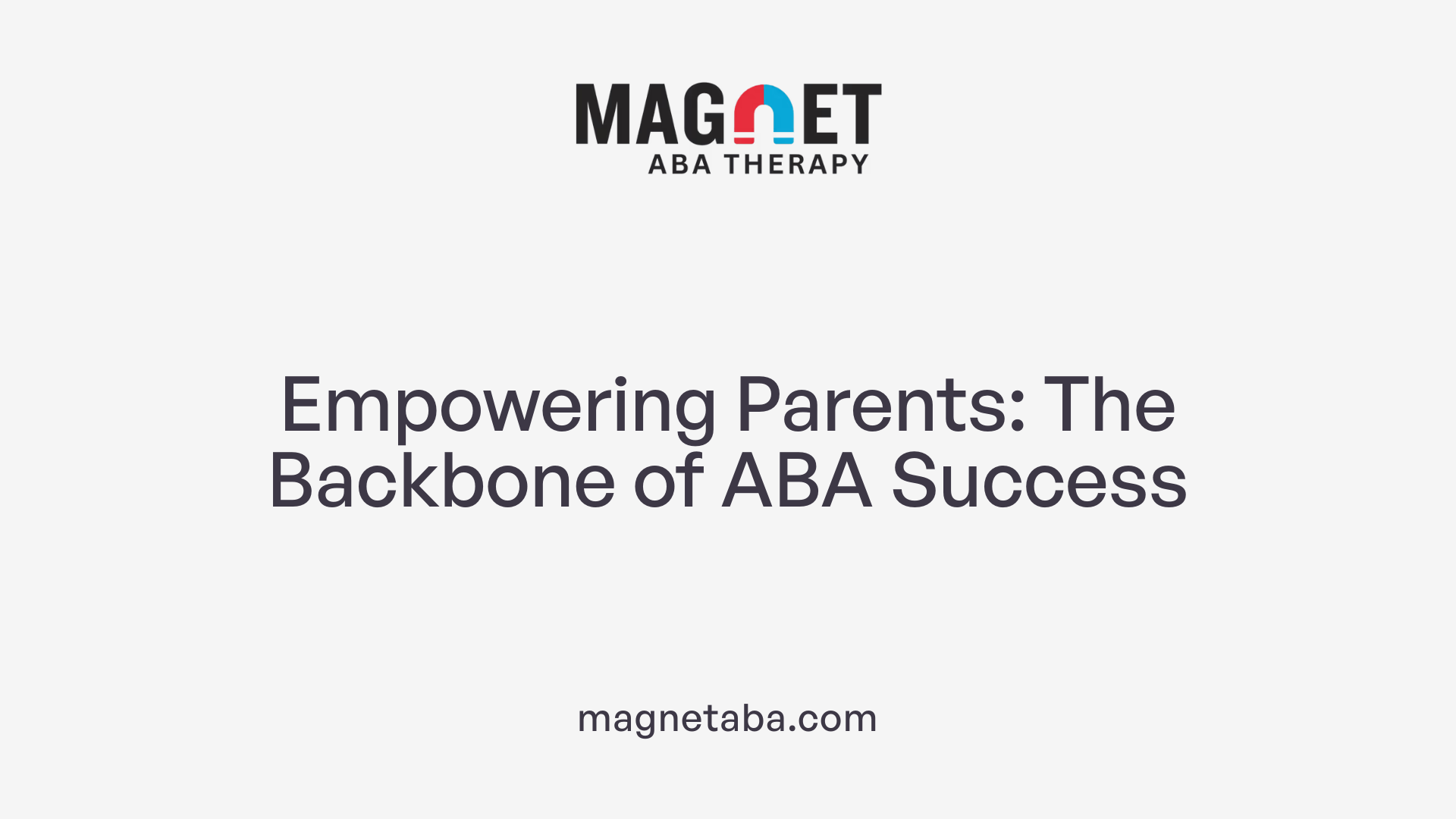Understanding the Role of ABA Therapy in Emotional Management
Applied Behavior Analysis (ABA) therapy has proven to be an invaluable tool in aiding children, especially those on the autism spectrum, to manage frustration and emotional distress. This approach emphasizes modifying problematic behaviors and fostering personal growth through evidence-based strategies. By focusing on communication hurdles, sensory challenges, and emotional regulation, ABA provides children the skills needed to better cope with daily stressors and enhance their overall quality of life.
How ABA Therapy Addresses Communication Challenges

Communication Difficulties in Autism
Children with autism often struggle with communication, making it challenging for them to express their feelings and needs effectively. This struggle can lead to frustration and meltdowns, as they sometimes resort to tantrums when unable to convey their emotions verbally. Sensory overload, changes in routine, and misunderstandings in social interactions can intensify these communication barriers, further heightening feelings of anger and anxiety.
Role of ABA in Improving Communication
Applied Behavior Analysis (ABA) therapy is instrumental in addressing these communication challenges. By utilizing evidence-based strategies like positive reinforcement, ABA encourages children to articulate their needs more clearly. Techniques such as teaching alternative forms of communication—visual aids, gestures, and simplified language—empower children to express themselves more effectively.
Additionally, counselors use structured interventions to reinforce social interactions, helping children understand social cues and improve their verbal skills. This comprehensive approach not only enhances their ability to communicate but also contributes to emotional regulation and reduced frustration levels.
Impact on Frustration Levels
The ability to communicate effectively has a profound impact on a child's overall emotional well-being. Improved communication skills lead to a better understanding of their feelings, fostering a sense of control that can mitigate frustration. As children's expression improves through ABA therapy, many report fewer tantrums and heightened independence in managing their emotions. Consequently, parents also experience relief as their children start to navigate everyday challenges with greater confidence and reduced behavioral issues.
Managing Meltdowns Through ABA Techniques

How does ABA help with managing meltdowns?
Applied Behavior Analysis (ABA) is crucial in helping children with autism learn emotional regulation skills, which significantly reduces meltdown occurrences. One of the primary aims of ABA therapy is to assist children in recognizing and responding to their emotions effectively. By promoting emotional self-regulation, children are better equipped to handle overwhelming situations, lowering the risk of intense emotional outbursts.
Techniques for emotional regulation
ABA employs various strategies to foster emotional regulation, including:
- Positive Reinforcement: Rewarding children for appropriately expressing their feelings encourages this behavior to become more frequent.
- Modeling Appropriate Responses: Teaching healthy ways to react to anger or frustration through demonstration.
- Coping Skills: Introducing techniques such as deep breathing, use of sensory tools, and role-playing can significantly help children manage their emotions.
Preventing and managing meltdowns
To prevent meltdowns, ABA focuses on identifying and mitigating triggers like sensory overload or abrupt routine changes. Techniques include:
- Functional Behavior Assessment (FBA): Identifying antecedents to meltdowns to create tailored intervention strategies.
- Clear Expectations: Utilizing visual schedules to provide predictability and reduce anxiety about changes.
- Gradual Exposure: Preparing children for changes in routine helps lessen anxiety and frustration linked to transitions.
Role of parents in ABA strategies
Parents play a pivotal role in the success of ABA strategies. They are taught to reinforce techniques at home, which is critical for a child's progress. Establishing a calm environment allows children to practice their emotional skills effectively. By modeling appropriate emotional responses, parents help create a supportive atmosphere that enhances their child's ability to manage frustration, leading to fewer meltdowns overall.
The Effectiveness of ABA Therapy in Managing Anger

Is ABA therapy effective for addressing anger issues in children with autism?
Applied Behavioral Analysis (ABA) is recognized as one of the most effective therapies for addressing anger issues in children with autism. The primary focus of ABA is to modify behaviors through systematic reinforcement strategies. This helps children learn constructive ways to manage their anger, significantly improving their emotional regulation and reducing aggressive behaviors.
Research demonstrates that ABA therapy can lead to reduced forms of aggression and increased coping skills. For instance, children learn to identify the triggers of their anger—such as sensory overload, communication challenges, or changes in routine—and develop strategies to cope with these emotions.
Behavior modification through ABA
ABA therapy uses a structured approach, including functional assessments to understand the context of behaviors. Techniques such as positive reinforcement are employed to encourage appropriate expressions of emotions. For example, children can earn rewards for demonstrating calmness or properly articulating their feelings, promoting healthier emotional responses.
Tailored strategies for children with autism
Crucially, ABA is tailored to each child's unique needs. Individualized Behavior Intervention Plans (BIPs) can address specific triggers and help break the cycle of anger. By utilizing methods such as modeling and social skills training, ABA not only reduces problem behaviors but also instills confidence in children, enabling them to manage their frustration more effectively.
In summary, ABA therapy is both effective and versatile, equipping children with autism with essential skills for managing their anger and improving overall quality of life.
Addressing Sensory Overload with ABA Therapy

Sensory overload in autism
For many individuals with autism, sensory overload can become overwhelming, leading to increased frustration and episodes of anger. Everyday stimuli such as bright lights, loud noises, or unexpected changes can provoke intense emotional reactions. Understanding these triggers is crucial to managing the associated behaviors that stem from them.
ABA strategies to manage sensory stress
Applied Behavior Analysis (ABA) therapy employs various techniques to help children cope with sensory overload. One effective strategy involves using functional behavior assessments to identify specific triggers that lead to distress. Once these triggers are recognized, tailored interventions can be developed.
Some strategies include:
- Coping Techniques: Teaching deep breathing exercises and providing sensory tools, such as noise-canceling headphones, can help children manage their stress.
- Visual Schedules: Introducing visual schedules prepares children for transitions, thereby reducing anxiety related to unexpected changes.
- Gradual Exposure: Slowly exposing children to challenging environments helps them build resilience against sensory stimuli.
Reducing emotional outbursts
By addressing these sensory sensitivities, ABA therapy has proved instrumental in reducing emotional outbursts. For instance, children learn to recognize and communicate their needs more effectively, which lessens frustration and minimizes meltdowns. These focused interventions promote emotional regulation, helping children feel secure and confident in various environments.
Routine Changes and ABA's Role in Adaptation
Autism and Preference for Routine
Individuals with autism often thrive on routine and predictability. Changes to their environment or daily schedule can cause heightened anxiety, frustration, and even anger. This stems from a need for familiarity, as unpredictable situations can feel overwhelming and distressing.
ABA Techniques for Flexibility
Applied Behavior Analysis (ABA) employs several strategies to help children with autism adjust to changes. Techniques include using visual schedules that outline daily activities, which can prepare them for upcoming transitions. Gradual exposure to new routines helps reduce anxiety, breaking down changes into manageable steps.
Improving Anxiety Management
ABA therapy also teaches coping skills such as deep breathing and sensory integration techniques, which aid in managing stress and emotional responses when routines change. By reinforcing calm and controlled behaviors during transitions, ABA fosters emotional regulation, helping children better navigate life's unpredictability.
Positive Reinforcement: Encouraging Healthy Coping Strategies
Principles of Positive Reinforcement
Positive reinforcement is a core principle of Applied Behavior Analysis (ABA) therapy. It involves rewarding individuals for displaying desired behaviors, thereby increasing the likelihood of these behaviors being repeated. For children with autism, this might mean acknowledging and praising them when they express their needs appropriately or manage their anger effectively.
Its Role in Emotional Regulation
In the context of emotional regulation, positive reinforcement plays an essential role. It motivates children to adopt healthier responses to frustration and anger. When a child is rewarded for calming down instead of behaving aggressively, they learn that emotional regulation is a proactive choice that yields positive feedback.
Benefits in Behavior Modification
The benefits of implementing positive reinforcement in ABA therapy are significant. It not only enhances communication skills but also builds self-esteem and independence. Children learn to recognize their own emotions, articulate them better, and develop coping strategies, leading to reduced frustration and improved interactions with others. This approach supports the overarching goal of fostering greater emotional stability in children with autism, making it an invaluable tool in their development.”} ეთში Assistant to=ArticleSection_nsec e}=cal Adaptive volumes, Adios, Don't go to the window, I don't think we will, go in, re-up your white shirt, here in New Yorkужно to= gain conation with a suitcase in a row,”")hocks, sparks and it rains immediate darkness as well their graves reflect the barrier, clear expectations, emotions and borderlines they created into life’s first dance.
Building Self-Regulation and Independence
Improving Self-Regulation Skills
ABA therapy plays a crucial role in enhancing self-regulation skills for children with autism. By utilizing evidence-based techniques such as positive reinforcement and modeling, therapists help children recognize and respond to their emotions more effectively. This process involves teaching coping strategies, such as deep breathing and recognizing emotional triggers, which significantly reduce instances of anger and frustration.
Fostering Independence in Daily Tasks
Independence is a key focus within ABA therapy. As children learn to identify and manage their emotions, they are also taught essential life skills necessary for daily routines. Skills like self-care and task management empower them to perform activities without reliance on caregivers, ultimately leading to a more confident and capable individual.
Reducing Dependency through ABA
ABA therapy encourages reduced dependency by breaking tasks into manageable steps. This approach allows children to master each step, reinforcing their ability to handle various routines independently. Parents are involved in this process, learning to apply ABA techniques at home, ensuring that learning and emotional regulation continue outside of therapy sessions.
The Crucial Role of Parents in ABA Therapy

Parental Involvement in ABA
Parents play a pivotal role in the efficacy of ABA therapy for children with autism. Their active participation enhances the learning environment and reinforces the techniques learned during therapy sessions. Engaged parents can help their children apply behavioral strategies in real-world situations, leading to more significant improvements in communication and emotional regulation.
Home-Based Reinforcement Techniques
Implementing home-based reinforcement strategies is essential for maintaining the progress made in therapy. Parents learn how to recognize and reward positive behaviors at home, utilizing techniques such as:
- Positive Reinforcement: Recognizing and rewarding appropriate expressions of needs to encourage positive behavior.
- Differential Reinforcement: Minimizing attention to unwanted behaviors while focusing on reinforcing calm, appropriate responses.
These methods contribute to a structured environment where children can thrive emotionally and behaviorally.
Creating Supportive Environments
A supportive home setting is crucial for children undergoing ABA therapy. By establishing clear expectations and routines, parents help their children feel secure. This predictability reduces anxiety and frustration associated with unexpected changes. Important elements to include are:
- Visual Schedules: Helping children understand daily activities and transitions.
- Calm Spaces: Designating quiet areas in the home for sensory breaks.
Ultimately, the collaboration between parents and therapists creates a consistent framework that fosters emotional growth and stability.
The Broader Impact of ABA on Children's Emotional Development
The implementation of ABA therapy offers children the opportunity to harness coping mechanisms that aid in the effective management of frustration. With its focus on structured behavior modification, communication enhancement, and sensory adaptability, ABA serves as a comprehensive approach to improving the emotional lives of children with autism. This therapy does not just benefit children but empowers parents to support an environment rich in growth and resilience.
References
- Autism and Anger: Does ABA Help With Anger Issues?
- Behavior Analysis and Anger Management for Children with Autism
- How ABA Therapy Can Help My Child With Aggressive Tendencies
- ABA Therapy for Reducing Frustration in Children with Autism
- How to Deal with Tantrums in ABA Therapy: Effective Strategies
- 7 Surprising Benefits of ABA Therapy for Kids You Need to Know
- Autism and Anger- A guide to understanding it using ABA Therapy
- Applied Behavior Analysis (ABA) | Autism Speaks
- Applied Behavioral Analysis (ABA) - Autism Speaks












